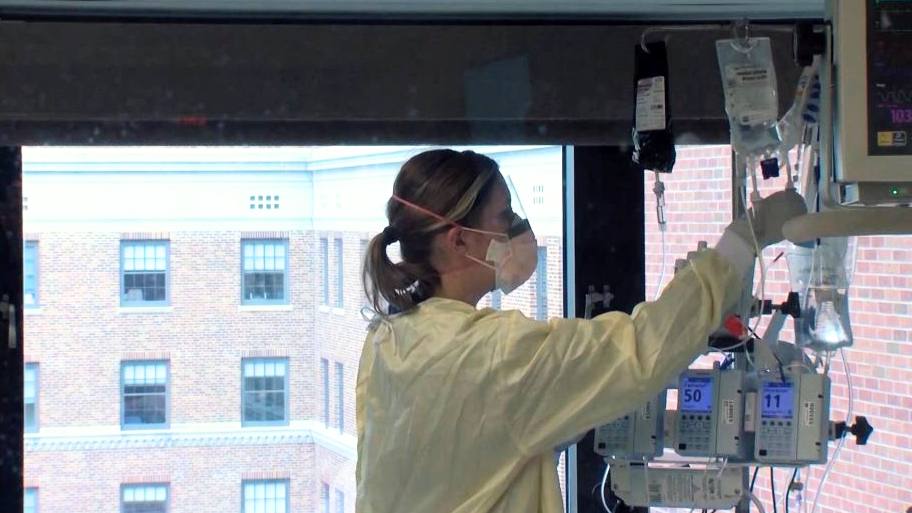-
Featured News
Mayo Clinic innovations to ease burden of COVID-19 surge on hospitals

The COVID-19 surge continues to affect much of the U.S., including every Mayo Clinic location across the Midwest. Testing volumes and positivity rates are increasing, which is translating to more people needing hospitalization.
Mayo Clinic continues to innovate in order to lessen the burden on hospitals and staff.
"Things have really changed from last March and we have learned an awful lot," says Dr. Amy W. Williams, executive dean of practice for Mayo Clinic. "We have incredibly robust modeling, we know how to manage and treat patients with COVID-19, no matter how acutely ill they are, and we know how to keep everybody safe with personal protective equipment. But what is really exciting is that we have new tools to treat patients in the outpatient setting."
Watch: Dr. Williams discuss innovations to ease burden of COVID-19 surge on hospitals.
Journalists: Broadcast-quality sound bites with Dr. Williams are available in the downloads. Please courtesy: "Amy Williams, M.D. / Executive dean of practice/ Mayo Clinic"
Mayo Clinic is treating patients with COVID-19 who are at a high risk of hospitalization with bamlanivimab monoclonal antibodies at its infusion therapy centers in Rochester and Mayo Clinic Health System locations in Austin, Mankato and Red Wing, Minnesota, and Eau Claire and La Crosse, Wisconsin.
"We now have monoclonal antibodies, and this is spectacular," explains Dr. Williams. "These antibodies can be given in the outpatient setting. They are given early in the disease when people don't need to be in the hospital yet in order to prevent hospitalizations, decrease the length of the disease and decrease symptoms."
Mayo Clinic's supply of bamlanivimab is based on allocation processes from the Minnesota Department of Health and Wisconsin Department of Health Services. State health departments are allocating supplies based on regional COVID-19 prevalence and hospitalization.
The supply that comes to the Upper Midwest will be limited to only those patients who live in the respective region. For example, doses cannot be transferred or shared among Mayo locations or regions, or across state lines.
Per guidance received from state health departments, patients should receive their infusions in the state where they live and at the site closest to their residence.
Per Food and Drug Administration (FDA) and state health department guidance, only a select group of patients who are considered at high risk of disease progression and hospitalization will be eligible to receive bamlanivimab with a single-dose outpatient infusion. Bamlanivimab is only approved for outpatients with mild COVID-19 symptoms and within 10 days of symptom onset.
Recently diagnosed Mayo Clinic patients with COVID-19 who are not hospitalized are automatically reviewed daily to see if they meet criteria for infusion. Patients who meet criteria are contacted and receive their infusion in the state that they live at a site closest to their home.
Remdesivir infusions also are underway at Mayo Clinic locations. The FDA-approved remdesivir is an antiviral drug to treat COVID-19 in the hospital or similar care settings, with continuation of IV therapy in the outpatient setting.
"This is a huge win. Remdesivir will help us decrease the length of stay, get people back home again and feeling better, sooner. And the monoclonal antibodies will help prevent hospitalizations. We didn't have those tools before, and now we do," says Dr. Williams.
Information in this post was accurate at the time of its posting. Due to the fluid nature of the COVID-19 pandemic, scientific understanding, along with guidelines and recommendations, may have changed since the original publication date.
For the safety of its patients, staff and visitors, Mayo Clinic has strict masking policies in place. Anyone shown without a mask was recorded prior to COVID-19 or in an area not designated for patient care, where social distancing and other safety protocols were followed.
For more information and all your COVID-19 coverage, go to the Mayo Clinic News Network and mayoclinic.org.







